New Odorless Topical Spironolactone Lotion
by Kevin Rands | May 14, 2016 8:33 pm
Topical Spironolactone usually has a bit of a skunk smell. New formulations have been produced recently which take care of that concern and help you focus on living your life. As a treatment for hair loss however, what’s the big deal about Topical Spironolactone?
Putting it simply, it’s been firmly established that male pattern baldness is initiated by DHT attaching to the receptor sites in the hair follicles.
Genetically, only the follicles on the top of the head are encoded with the receptor sites, which explains why hair along the side and in the back is not lost with age.
The DHT attached to the receptor site is perceived as a foreign body and the immune system begins to destroy the hair follicle. This shortens the growth phase and causes the hair shaft to become progressively finer in texture. In extreme cases, only a vellus (thin, short, pigment-free) hair remains.
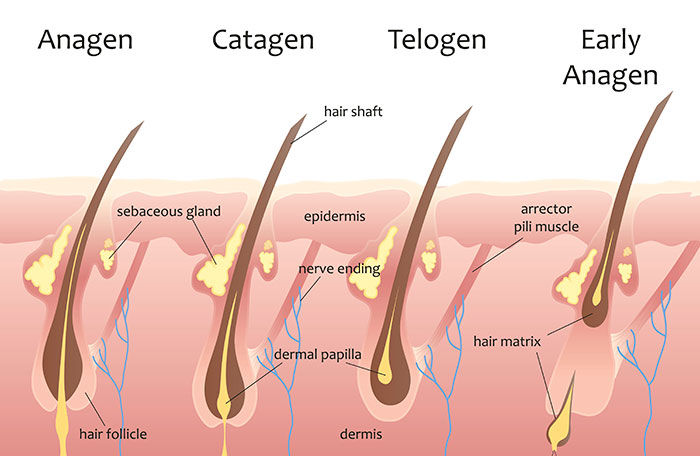
Where To Get Topical Spironolactone Online?
Two pages are available which describe the only two Topical Spironolactone products available (and where to get them): S5 Cream and S5 Plus Cream. We did a major article on the release of these two new treatments[1] recently. You’re encouraged to check it out, as well as the product reviews dedicated to both:
- Topical Spironolactone S5 Cream – An Experts Review
- Topical Spironolactone S5 Plus Cream – Even Better?[2]
The good news is that the follicles have the inherent capacity to mature to their former size. Encouraged with the success of Propecia (Finasteride)[3] to reduce the amount of DHT in the scalp of patients with male pattern baldness (MPB), researchers took another look at existing medications that are known to act as anti-androgens.
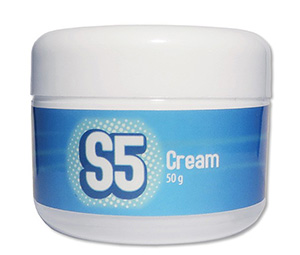
A Topical Antiandrogen Alternative to Propecia?
There has to be stringent criteria for an anti-androgen that can be used to combat or even reverse pattern alopecia. The ideal anti-androgen should have the following properties:
- It has to have potent anti-androgen activity.
- It should selectively prevent or successfully compete with DHT without changing testosterone levels.
- It should be effective topically, so it can be conveniently applied with minoxidil solutions.
- Even though it’s easily absorbed into the skin, it should not have any systemic effects.
That’s a tall order.
Surprisingly enough, there is such a medication: Spironolactone.
For over thirty years Spironolactone has been used as an antihypertensive and a diuretic. More recently, it has been used to treat hirsutism (excess body hair) in women. Using Spironolactone to treat hirsutism may sound contradictory, but body hair (e.g. chest, face, axilla, pubis, etc.) is promoted by testosterone and since Spironolactone is a potent anti-androgen, it’s successfully used to eliminate unwanted hair on the body.
On the top of the head, where the hair is adversely affected by DHT, Spironolactone has just the opposite effect. Spironolactone exhibits anti-androgenic effects in both males and females.
Taken orally, it is such a potent anti-androgen that, although it is an effective anti-hypertensive drug, it is rarely used to treat men with hypertension because of its feminizing properties, including painful gynecomastia.
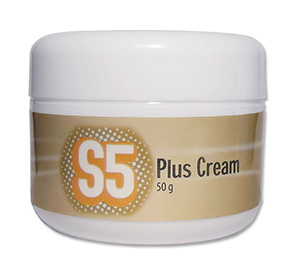
However, applied topically, Spironolactone does not have any systemic side effects.
Among its other properties as an anti-androgen, Spironolactone also effectively prevents DHT from attaching to the receptor sites on the hair follicles. As a result, the follicles no longer atrophy and can mature again to their normal size.
And it does so without decreasing the circulating levels of DHT in the body. By comparison, Finasteride inhibits the formation of DHT, causing troublesome side effects in many patients.
Topical Spironolactone Smell
Despite its obvious potential, there have been some minor drawbacks with the use of topical Spironolactone. The Spironolactone has an inherent disagreeable mercaptan-like odor.
Several people complain that after creating a topical Spiro solution themselves, an egg-like odor permeates their hair after application, which can be both embarrassing and inconvenient.
Fortunately, Dr. Lee and his team have produced a stable Topical Spironolactone product in the form of a lotion which does not have an offensive smell.
We had the opportunity to speak with Dr. Lee regarding Spiro and the release of this new and improved version of Topical Spironolactone soon to come…
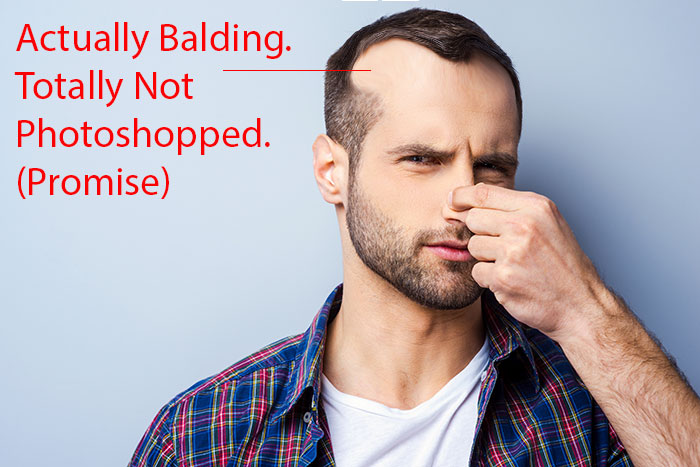
HairLossTalk: Tell us about Topical Spironolactone.
Dr. Lee: Spironolactone is not a new medication at all. It’s been used for decades, well over 30 years. It has been used for many purposes. It has been used as a diuretic, an antiandrogen, and it has pretty much always been administered orally – that is – taken as a tablet. For the most part it has always only been indicated for use in women’s hair loss treatments[4] because it has very potent antiandrogen properties which can cause feminization in men. However, there have been fairly recent studies dating back to the late 80’s, which show that it works quite well topically and can be used by men in this fashion. Since it gets metabolized in the skin, it doesn’t have the systemic side effects men would see if taking it orally. The advantage of using Spironolactone over other antiandrogens is multi-fold: It can prevent the synthesis of DHT from Testosterone, it actually blocks the androgen receptor site, so that if there is DHT around, carried by the bloodstream from the prostate or whatnot, the site is blocked.
HairLossTalk: So it actually binds to the receptor itself, rather than allowing DHT to do so, which as we know, is one of the root causes for hair loss in men?
Dr. Lee: Yes. It binds at the receptor site. The third thing Spironolactone can do, and this may be the most important, is that it actually converts some of the Testosterone into an estrogen. So it has a very good effect on stopping the processes occurring in the scalp which cause hair loss. In fact, before I made Xandrox, which is a combination of Minoxidil[5] and Azelaic Acid[6], I was trying to make a combination of Minoxidil and Spironolactone. It didn’t work. In the same base, the two eventually reacted with each other and created an awful smell, so it still has to be applied separately.
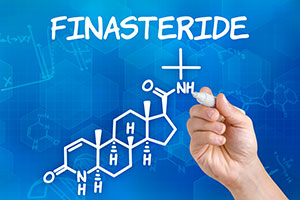
HairLossTalk: For someone using Minoxidil and Spiro, how would they avoid the smell?
Dr. Lee: Well they can be applied, essentially, one right after the other, fairly close together in time. It takes several hours for Spironolactone to react with Minoxidil, so by that time, it will already have been absorbed.
HairLossTalk: Spiro blocks the receptor site from DHT attaching, but what about Testosterone itself?
Dr. Lee: Spironolactone effectively blocks the receptor site so that neither DHT nor Testosterone can bind to it.
HairLossTalk: In your experience, how do Oral Finasteride (Propecia/Proscar)[7] stack up to Topical Spiro as far as hair maintenance and regrowth?
Dr. Lee: There are several studies which show the effectiveness of each individually, but there are none which exist that compare the two for hair loss. For those who have any reservations about taking something systemically, or currently have side effects with Propecia, it’s a good alternative. But it has its advantages and disadvantages. Advantages being that it does not have any side effects, it is effective, and it’s quite inexpensive compared to Propecia. The downside is its less convenient to use… no more inconvenient than minoxidil, but it does have to be applied separately.
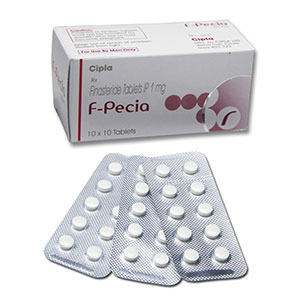
Propecia / Finasteride
HairLossTalk: As we all know, there are many dangerous substances out there which could be applied topically and regrow hair or inhibit its falling out. The problem arises in that these substances absorb and can cause serious systemic side effects. It’s been said that if scientists could find an effective topical that did not absorb and stay in its original form, it would be the Holy Grail of topical hair loss treatments[8].
Dr. Lee: (Laughs) .. It’s not that Spironolactone doesn’t absorb, its just that it gets metabolized, so it doesn’t have any systemic effects.
HairLossTalk: What will be the most effective way for this lotion to be applied[9]. I know some people complain of difficulty applying other lotion based topicals because it gets all over their hair – especially those with diffuse thinning rather than receding or a bald spot.
Dr. Lee: It’s a lotion, so its not as thick as a cream, but with a lotion you can put some on your fingertip and localize where you put it, unlike an alcohol based liquid. It will be easier to apply for those who have a well defined area of recession or thinning. With diffuse thinning, of course, you have to cover the whole area, so its a little bit more difficult. If you’re just applying it to the temples, its great. For diffuse thinning, its probably better to use something like Propecia because you’re dealing with the entire scalp area that way.
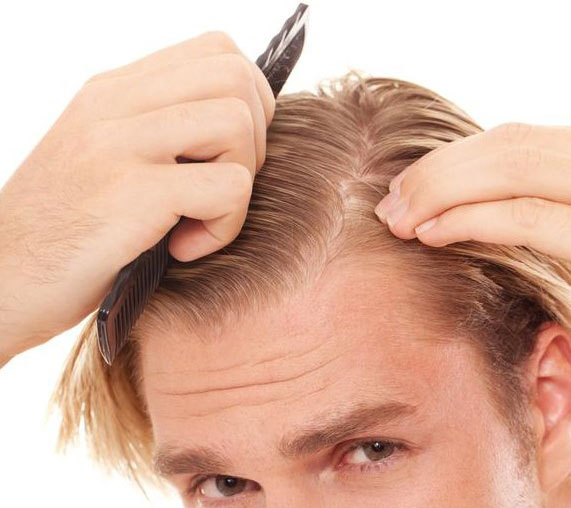
HairLossTalk: Tell us about the new Topical Spiro product you plan to release which will have no unpleasant smell.
Dr. Lee: The reason why Spiro smells so unpleasant in our current solution is because it is in an alcohol base, so that it is quite volatile. Consequently, the smell was sometimes sour. In the new product, it is not volatile at all. The old product seemed to increase in smell as time went on (sometimes only a few days), however this new product has a shelf life of over a year.
HairLossTalk: The goal with Propecia obviously is a systemic altering of hormonal balances. It works from within the bloodstream to affect the levels of DHT throughout the whole body. It takes time for it to actually begin to affect the hormonal processes going on in the Scalp. It’s not instant in the scalp even though its bloodstream effects are instant, and even when it has begun to work in the scalp, its even longer before you notice anything aesthetically as far as maintenance of hair or regrowth. Why is it that we have such an effective systemic DHT inhibitor, and the concept of systemic DHT inhibitors[10], especially with the upcoming release of Dutasteride is very clear to us that it works… but its so difficult for scientists to come up with a topical DHT inhibitor that comes anywhere near to working as well? It would seem to us that having to change your hormonal balances throughout your entire body would be incredibly unnecessary just to achieve the goal of making a change in the scalp. Why is it so hard for us to make something work *locally* in a topical formulation? Is it an issue of not enough absorption? Is it an issue of too much absorption which results in the active ingredient being “washed” away by the bloodstream, causing the treatment to not be present a sufficient number of hours out of the day to actually make a difference?
Dr. Lee: Actually its both. By the way Finasteride (the active ingredient in Propecia) does work topically. When Merck was doing their trials, they had to make a decision as to what they felt would be a better selling product: A pill, or a topical applied solution. By far, people would rather take a pill, so this is the route they took. To answer your question: Why don’t topicals work as well? It’s for many reasons. One reason is that it doesn’t stay in the skin long enough. That’s the problem with progesterone. It’s absorbed, metabolized, and carried away so quickly that it’s not effective when it’s applied topically. Another problem is absorption. There are very few things that get absorbed into skin very well at all. Its quite the protective device.
HairLossTalk: So the goal for researchers as far as finding topical DHT inhibitors should be a focus more so on finding one that, once absorbed, isn’t metabolized so quickly?
Dr. Lee: Yes. One that doesn’t get carried away by the circulatory system. They did that with progesterone by putting it into an oil base so that it had a slow, timed release. I have been doing a lot of work with a Biochemist in the Bay Area using liposome’s, and that works very well at keeping the active ingredients stationary in the scalp once absorbed, but the expenses involved make it prohibitive. So yes, we’re still looking for the holy grail.
HairLossTalk: So why is it that Spiro still works even though, as you mentioned, it gets metabolized so quickly?
Dr. Lee: It absorbs into the skin and blocks the receptor site. Anything that gets into the bloodstream, has already been degraded.
 [11]
[11]Buy S5 Cream
 [12]
[12]Buy S5 Plus Cream
- major article on the release of these two new treatments: https://www.hairlosstalk.com/news/treatments/s5-cream-returned/
- Topical Spironolactone S5 Plus Cream – Even Better?: https://www.hairlosstalk.com/treatments/s5-plus-cream/
- Propecia (Finasteride): https://www.hairlosstalk.com/treatments/propecia/
- women’s hair loss treatments: https://www.hairlosstalk.com/womens-hair-loss-treatments/
- Minoxidil: https://www.hairlosstalk.com/treatments/rogaine/
- Azelaic Acid: https://www.hairlosstalk.com/shop/kourosh-dht-blocker.html
- Oral Finasteride (Propecia/Proscar): https://www.hairlosstalk.com/treatments/propecia/
- hair loss treatments: https://www.hairlosstalk.com/hair-loss-treatments/
- the most effective way for this lotion to be applied: https://www.hairlosstalk.com/news/treatments/how-applying-s5-cream-to-scalp/
- DHT inhibitors: https://www.hairlosstalk.com/hair-loss-treatments/
- [Image]: https://www.hairlosstalk.com/shop/topical-spironolactone-combo.html
- [Image]: https://www.hairlosstalk.com/shop/s5-plus-pack.html
Source URL: https://www.hairlosstalk.com/news/treatments/odorless-topical-spiro-lotion/